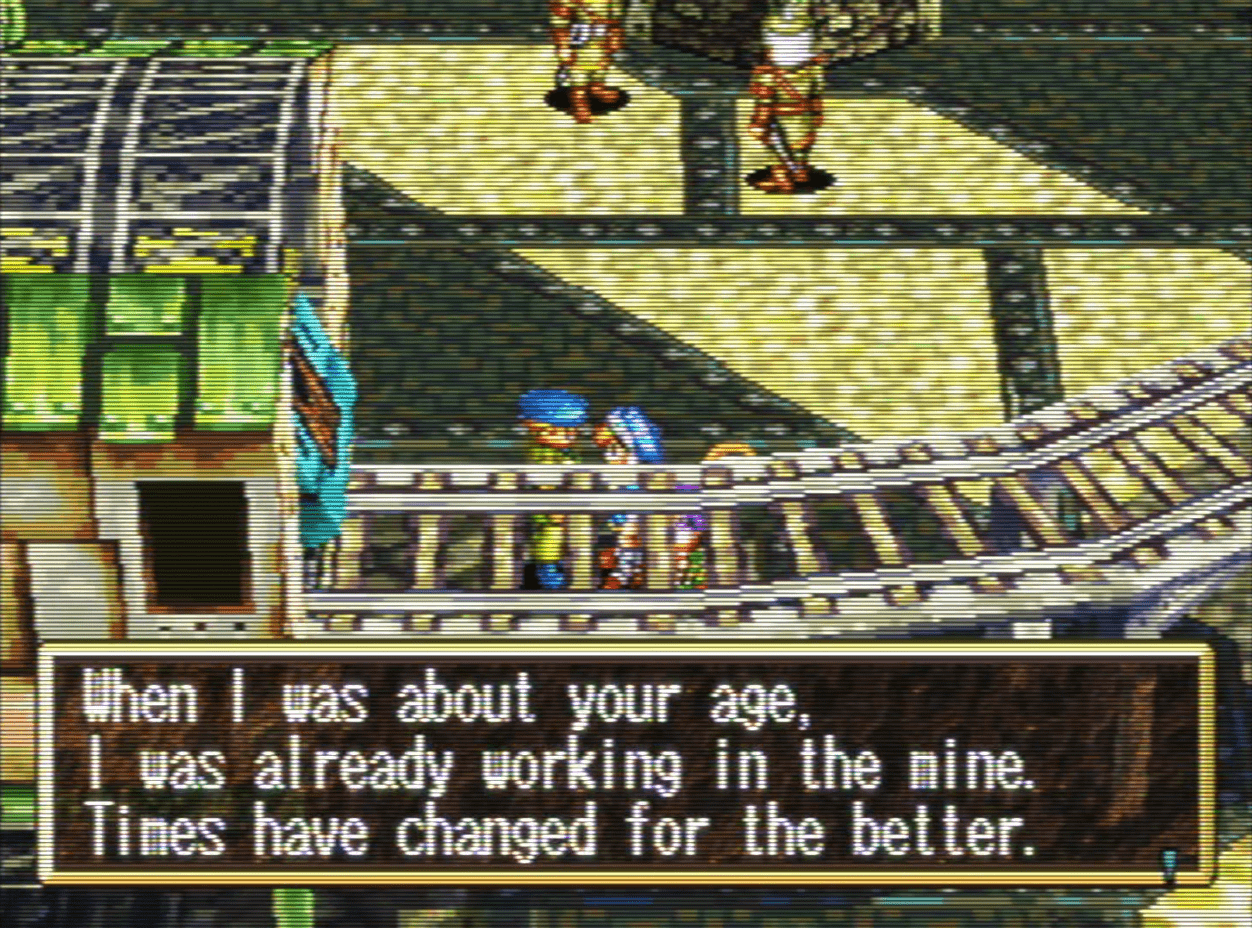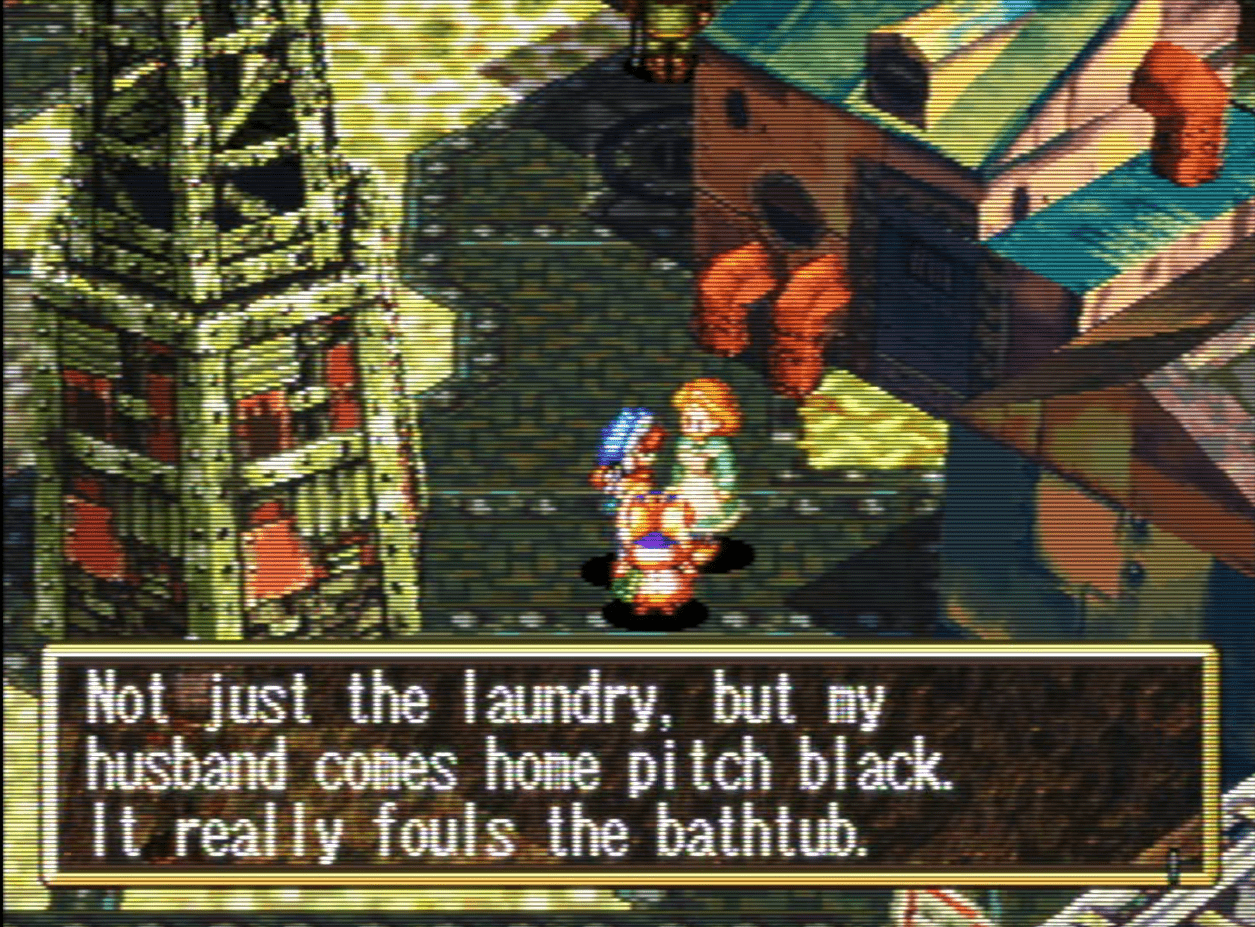SESSION #2
We wake up the next morning with one goal in mind, to talk to the curator about our late fathers inheritance: An ancient spirit stone that may or may not be real. Now we are able to explore the whole town of Parm. Parm is big for a starting town. Well, not really but it feels large. I think this is mainly due to the amount of NPC and NPC dialogue. They aren't mindblowing by any means, but people in the town know each other, comment about the state of the world, histories of the past, etc. It makes this little place feel connected and real. Also a lot of the NPC dialogue is very funny, I giggled at a lot of stuff.

One of the first places I went was Sue's house where I found out that she is an orphan being taken care of by her parents. Lilly (Justin's Mom) and Justin are her new found family mother and brother. The two kids may joke around, especially Sue by picking on Justin, but you can tell they love and care for each other. It's really, really cute and it just served to endear me more to these characters. We also find out Sue's uncle has a drinking problem, and often drinks secretly in Sue's room. Another example of Grandia painting these imperfect portraits of childhood that while not ideal, are happy. These kids find family and support in each other, and the adults take care of them as a community.

This tiny community struggles. It seems that the fact that it's a coastal town and the army digging around the nearby ruins should be good for them but it's a mixed bag. As I discussed in the previous session, Grandia's world is in a time of technical and geographical revolution. New machines and technologies are being created, and with them come new problems. People complain about the soot of the factories and of course these factories are owned by a minority group of rich people with military ties that seem to think they are doing a service by stealing the surplus value of Parm's workers. Sure it's not as bad as a kid working in mines like some of the older folk tell us, but things still have ways to go. Of course I'm not saying Grandia is this hidden marxist masterpiece. It's a game for kids. What I'm trying to illustrate here is that details like this ground Grandia's colorful world and give it even more charm.


After talking to everyone, we go into the Museum where we learn a bit more about this world's Lore. We hear myths of a supposed ancient civilization. We learn that General Baal, the obvious bad guy we met in the intro, is really, really interested in this ancient civilization. The spirit stones once were blessings shared to humans by the ancient Icarians, however humans weren't happy with the prosperity they had. They wanted more and their greed broke the stone into pieces. The Icarians left alongside the stone. I suspect, similarly to FF7 and other jrpg's/shonen of the era, that the game might me building up to an environmentalist message

The day ends with the curator giving us a written permission to visit the Sult Ruins! I like how certain adults encourage Justin and Sue, that even though they might get in trouble they are kids, and curious ones at that. The old man telling his tales, the old inventor proudly showing his vision of the future, the museum curator getting just as excited as Justin about the ancient civilization. It's very cute. Curiosity is the birth of adventure.


So it is that we go home, with a new goal of visiting the ruins tomorrow. And it was very late so I went to sleep too. Join us in the next session (which already happened but I'll write tomorrow) where we went through the first dungeon of the game!

Date of Session: Between the night of 14/12 and 15/12 of 2024.